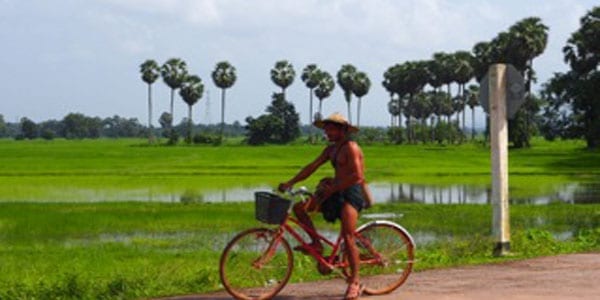
Be called Myanmar, Burma or Burma, what has not changed in this country, closed for many years to tourism and that are its ancient pagodas. As well as their rice field landscapes and curious floating tomato plants of the Inle Lake, where the fishermen offer a real show. Sailing by canoe through this lake we will also find a artisan distillery of Sake.
Quite a surprise. As it is also discovering here a wine cellar among vineyards, some of them from Tempranillo grape. Attend fully orchestrated, family-friendly making of noodles of rice and that it is open to the visits.
Bagan
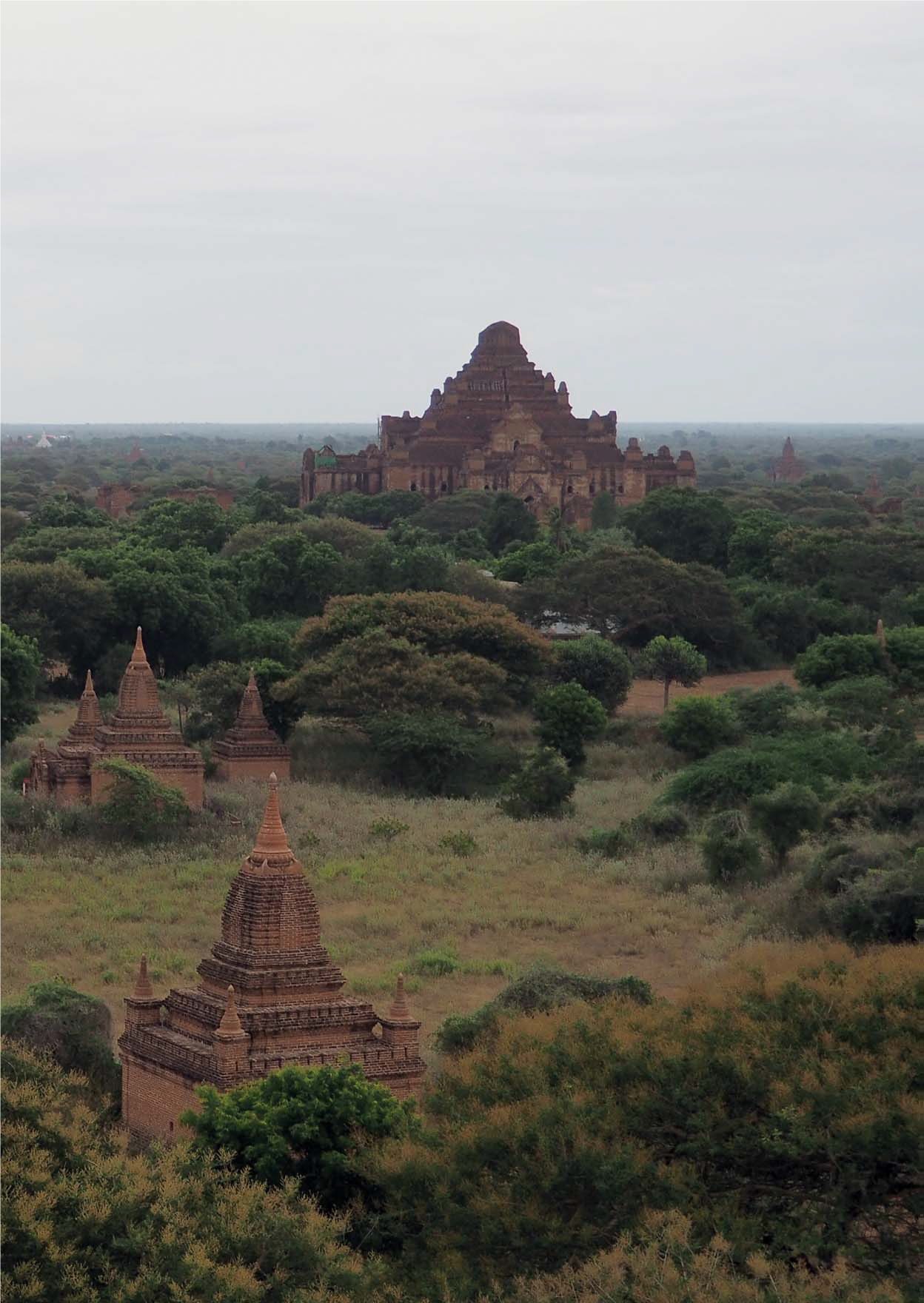
Burma, the land of pagodas
This is the country of pagodas. It is estimated that there are more than two million, and the best of them, about 2.500 of the Middle Ages, They're in Bagan. Here are of all sizes, materials and colors. The best way to visit them is on board a electric motorbike with which to get lost on the roads.
A highly recommended way to get to the most emblematic city of Myanmar is boat. From Mandalay, , ancient capital, on a journey that will last from sunrise to sunset through the majestic Ayeyarwad River. This crosses a large part of the country and from which the daily life of the citizens can be observed.

Agricultural burma
About 70% of Burmese who work do so in the farming. Addition rice, burma in the years prior to World War II it was the world's leading exporter, with 3 million tons. The main agricultural products are cotton, corn, peanut and tobacco.
All of them are favored by the irrigation used in the course of the Ayeyarwady River. The omnipresence of this river also means that throughout the country it is consumed freshwater fish galore.
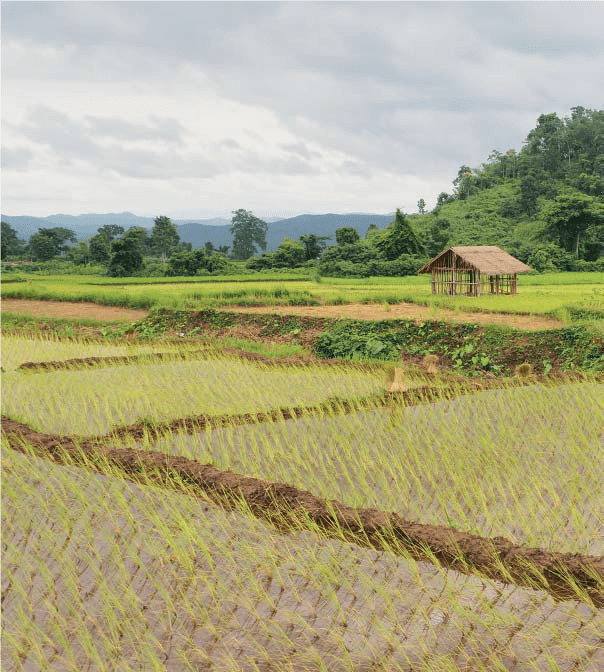
Inle Lake
And in the beautiful Inle lake It is an obligatory destination on a trip through the country. There people live in stilt houses, you can attend a whole show, such as watching the fishermen use the traditional conical nets.
They move in small canoes that move by rowing with one leg. An authentic choreography on water. The fishermen, like most of the inhabitants of this area, are from the inthya ethnic group (sons of the lake). This ethnic group came from southeastern Myanmar in the fourteenth century.
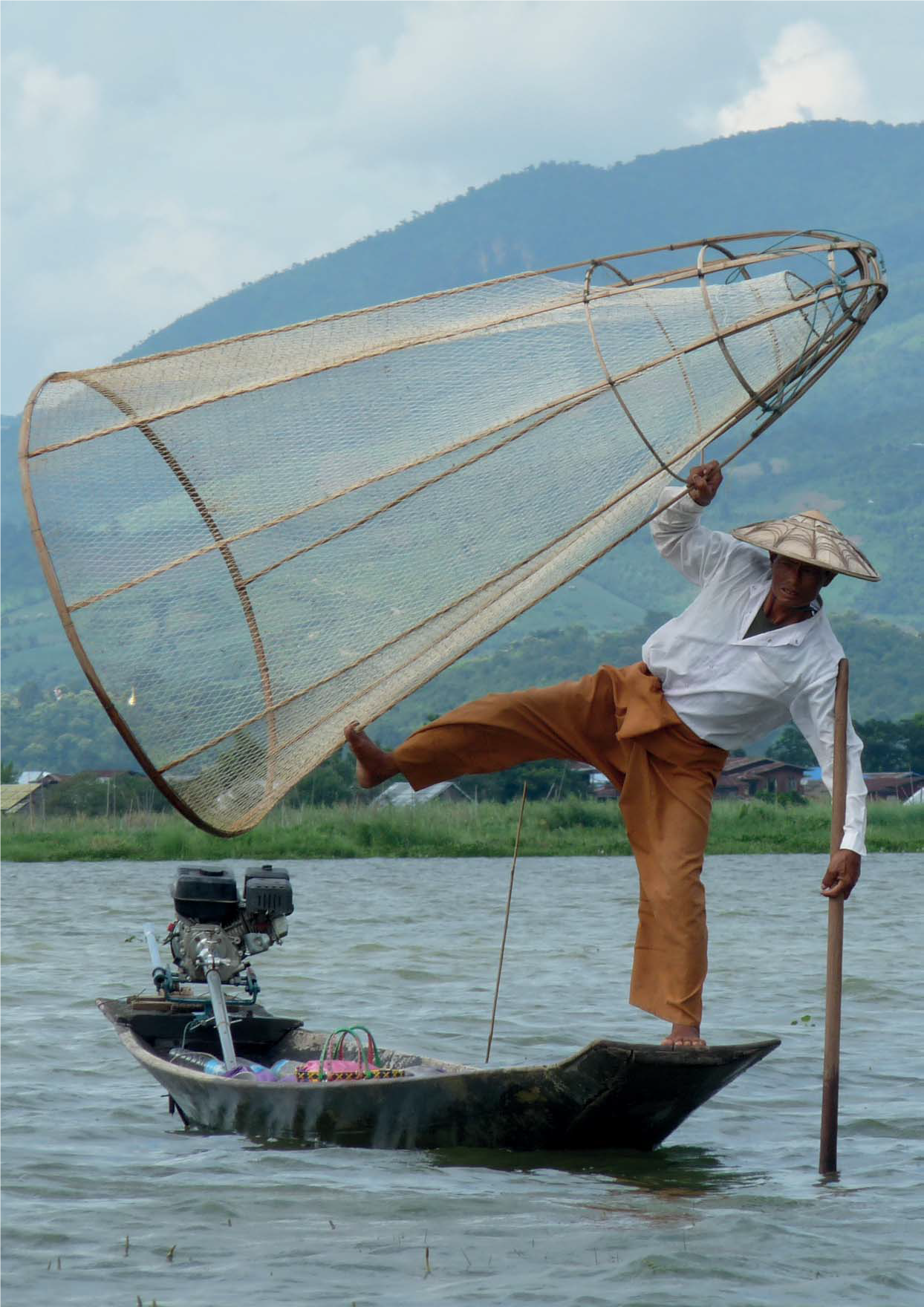
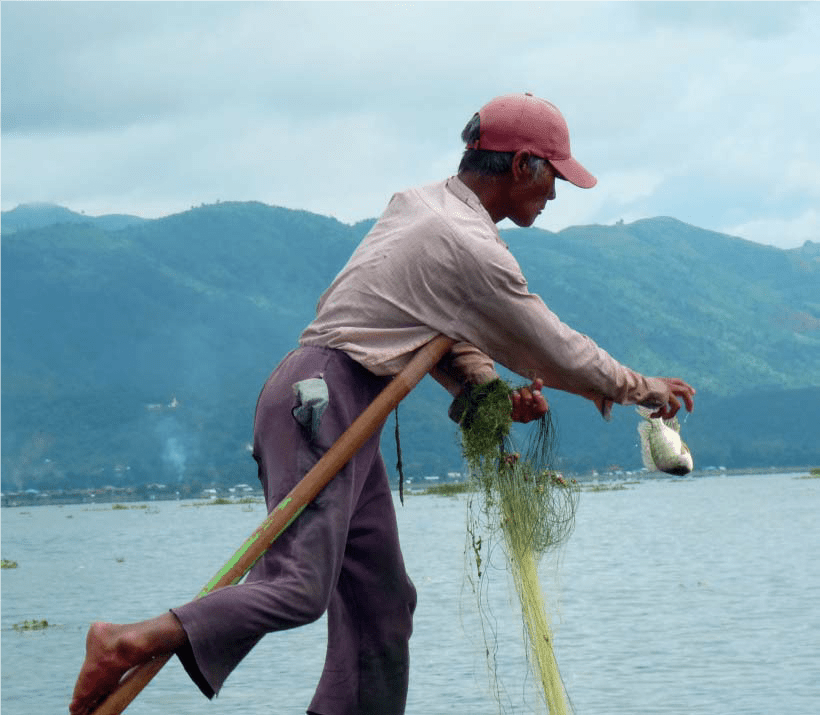
To see the fishermen of Burma, the visitor takes a boat in Nyaung Shwe. From this canoe you can see tomato plants here and there in the so-called floating gardens. There are boats that are dedicated to collecting a kind of algae, where they will plant the tomato plants.
In addition to tomatoes, they grow zucchini, cauliflower and cucumber. You can see how they collect the tomatoes, all small, from the canoe and how they carry them to Nyaung Shwe. There cooperatives and wholesalers classify them and place them in wooden boxes that they will export to the whole country.
The lake, a place of fishing and cultivation
Those who stay here are sold in the Nyaung Shwe market. In all the markets of the country there are many and varied freshwater fish. Crowd of dried fish, vegetables of all kinds, papayas, mangoes and some very sweet pineapples. There are also gigantic durians, covered with thorns, whose strong smell has led to ban them in some hotels and buses.
Likewise, the stalls of pieces of sandalwood, from which the tanaka. A pasta yellow that almost all women and some men smear on their faces to protect their skin from the sun. In Nyaung Shwe the restaurant is highly recommended Live Dim Sumhouse.
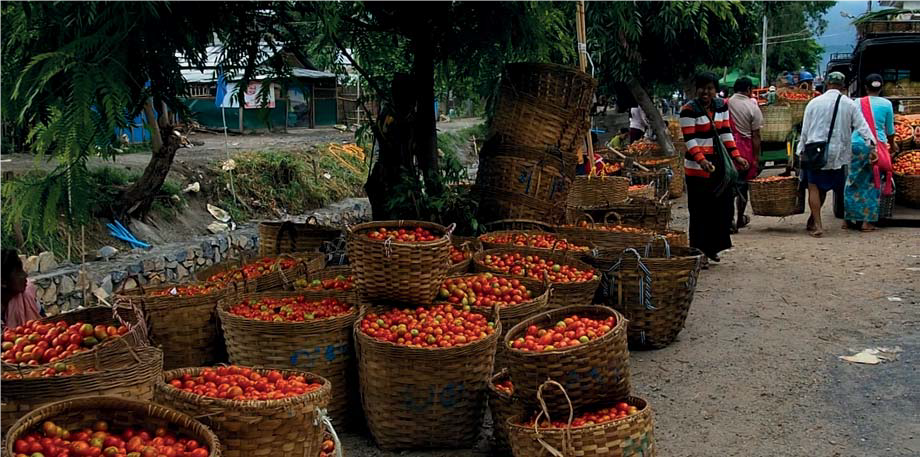
Inle Lake, tomato cultivation
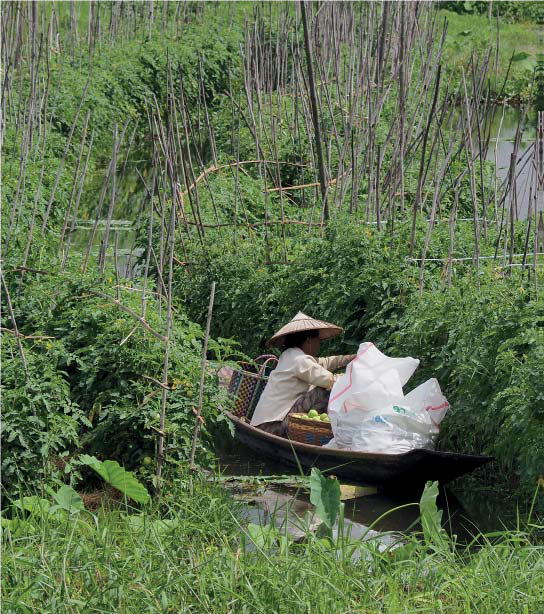
Along the lake it is possible to visit some of the markets that are held every five days, such as the floating of Yawama, near the Phaung Daw U pagoda, which contains images of Buddha XNUMXth century.
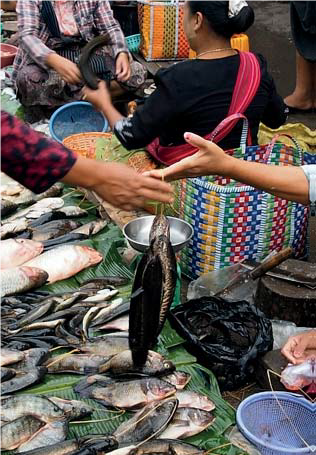
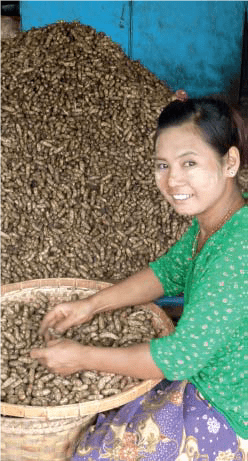
Discovering a distillery
By boat it can also be reached in a two-hour journey visiting the In Dein shrine. Stilt houses completely away from tourism, rice paddies and corn fields, until samkar. There, in the middle of the forest, is a artisan distillery of Sake: el Best Jungle Sake.
It is on the edge of an artificial lake that was made in 1973 to build a hydroelectric plant and bring electricity to Yangon. At present they do not have electricity here, but they do have the Internet. Sai Myo Thet Kyaw is from the third generation of a family that makes Sake following the traditional recipe of the place.
Every day makes 20 liters of Sake using the same rice than the one used to eat. The leftover rice is given to the pigs, which they call “happy pigs” because the grains still contain alcohol. In this place it is done Sake with 20º, 40º and 60º of alcohol.
During the military dictatorship that ruled since 1964, he tells us Sai Myo Thet Kyaw, you had to drink Sake secretly. In Myanmar the most widely drunk distillates are whiskey and rum, Whereas the Sake it is drunk especially at weddings.
A winery in Burma
What the traveler does not expect in this country is to find a wine cellar. Is the Save Mountain, one of the two wineries that exist in Myanmar and that rises to 1.000 meters of altitude. It can be reached by bike from Nyaung Shwe. Open since 2002, its founder, U Nay Wir Tur, I travel to France to learn about wine.
On his return he chose this place because it was surrounded by mountains that protect the vineyards from heavy rains. Has in total 75 hectares of vineyards, half of Tempranillo. The collection is by hand, being cheaper than by machine (a working day is paid at 3.500 kyats, 2,1 euros).
Its production is 200.000 bottles per year. While contemplating the landscape and the vineyards, it is possible to taste the different wines Sauvignon Blanc, Syrah and Syrah-Tempranillo. You may discover that although its quality is not high, it is an achievement for a country with adverse weather conditions for this crop.
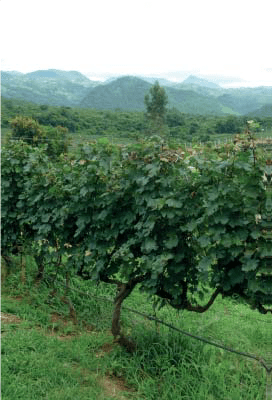
The minimum and average salary of Myanmar it is among the lowest in the world. Because food is not expensive and there is no overpopulation - it has 60 million inhabitants - you don't see much misery. In 1989 the country began to open up to capitalism, leaving behind the Burmese way of socialism, which was a disaster. Brought to Burma to be among the poorest countries in the world.
Burma, leader in rice export
In the 90s, the country was once again in the leading group among the world rice exporters. Agriculture currently accounts for 37% of GDP.
The pagodas and caves from the surroundings of Hpa-An rise among beautiful landscapes of rice paddies. Like the Dalinian pagoda Kyauk kalap, on top of a rock, or the caves of Saddan and Kawgun. The latter with thousands of sizes of Buddha inside, some from the XNUMXth century.
The first teak wood producer
Area Hsipaw, ideal place to do trekking, you can see how the corn fields They have been eating land from tea crops. With plants from 150 years ago.
The reason is the low price to which the tea is paid (1,6 kilos is paid at 4.500 kyats, 2,7 euros;) and to the increase in the export of corn to the neighboring and overpopulated China. Here, as in the whole country, they look teak trees. Burma It has the largest area of natural teak forests and is the leading producer of teak logs in the world.
Hsipaw It has a market at dawn, in which the stalls are lit with candles and which is very suggestive to visit. As in other markets in the country, Buddhist monks and nuns They are asking for food from stall to stall.

A factory of noodles
In this city, very close to the Shan Palace "Haw Sao Pha", we discovered a family factory of noodles (noodles), open to anyone who wants to attend its preparation. The makers follow perfectly orchestrated movements led by the head of the family, Daw Khin Thar Kyi. The process, which takes about an hour, begins by doing with the rice, from which the starch has previously been removed, balls of about 5 kilos.
These are put to boil in an oven, which heats a cauldron with water and they are kneaded producing a dough similar to that of bread. Water is added and it is passed through some cloths that act as a sieve, leaving a liquid rice pasta.
Later, with a kind of shower telephone, it is shaped into a noodle. These fall into boiling water, where they cook for about two minutes. From there they are transferred to cold water, where they acquire a greater consistency and are ready for packaging.
A woman takes by bicycle the first to leave the factory and that Burmese people like to eat accompanied by vegetables, chicken, fish, or meat. One of the typical dishes are 'shan noodles', originating in the state Shan, with vegetables, pig or chicken, sesame and peanuts. They are usually eaten at breakfast, like the national dish, the 'Mohinga', a soup of rice noodles in fish broth.
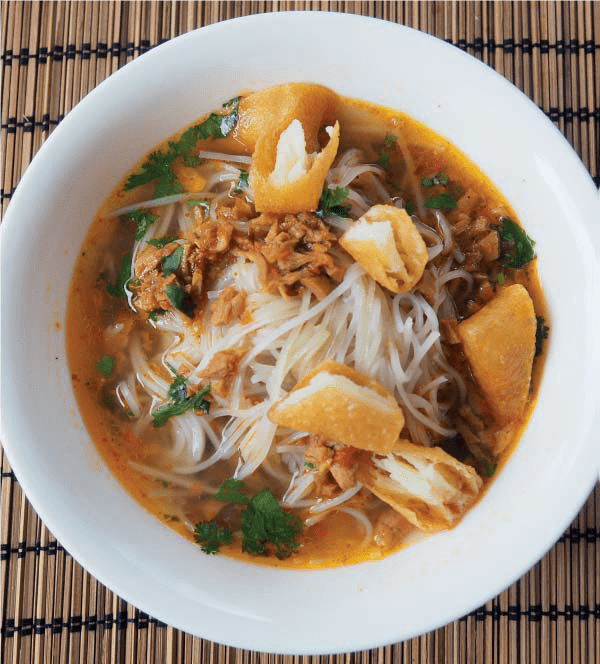
An unforgettable train journey
A plate of noodlesIn addition to a lot of other food, it can be tasted on the train, thanks to street vendors. Since Hsipaw, this transport reaches the old capital Mandalay, . It is the best way to do this route, although it is advisable to get off at Pyn u Lwin, eight hours and do the rest of the way by road.
The train passes through a viaduct, a great attraction of the trip, during which villages and rice fields. While the vegetation is materially entering through the windows.
Mandalay, , the second city in the country after Yangon, is the most important religious center of Burma. Do not miss a visit to the monasteries and pagodas at the foot of the hill. Although the favorite pagoda of the inhabitants of Mandalay, es Mahamuni paya, in the southwest of the city.
Peanut oil
In a small place next to this pagoda there is a peanut oil factory. With the machines they crush the peanuts to extract the oil. The dried part of the fruit, converted into a paste, will be used to add to meals and sauces.
En Mandalay, the restaurant is highly recommended, very popular, Aye Myit Tar. It follows the tradition of the country consisting of serving the dishes that have been ordered accompanied by many other of vegetables, potatoes, vegetable and fish salads, sauces and soup.
Around Mandalay, , riding a Amarapurayou can take a walk across the bridge U bein. The world's longest teak wood, which measures more than a kilometer, is a symbol of the simplicity and tradition of this country. In perfect harmony with nature.






